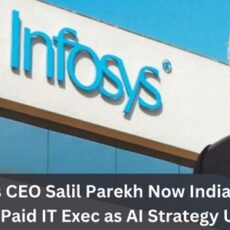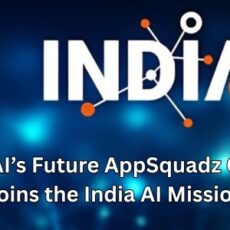Introduction
The ability to adapt is a key factor for organizations today. As companies look for new formats to shape the future of work, it’s essential to create a workplace where cooperation and interaction can thrive. It has led us to a system where new-age tech will drive business, and work models will have to be more sustainable. Hybrid work is now an established part of the future work system. GetMyIndia.com
The Agile Revolution
The roots of Agile can be traced back to 2001 when a group of forward-thinking developers crafted the Agile Manifesto. This manifesto emphasized valuing individuals and interactions, delivering working software over documentation, collaborating with customers, and being responsive to change. These core values struck a chord within the development community and spurred the rise of Agile methodologies like Scrum, Kanban, and Extreme Programming.
Agility in the Workplace: The Key to Adapting to Change
Agility in the workplace refers to an organization’s ability to quickly respond to changes, challenges, and new opportunities. In today’s fast-paced business environment, agility is crucial for staying competitive. This includes adopting flexible work structures, empowering teams to make quick decisions, and fostering a culture of continuous learning. Agile organizations break down traditional silos, encouraging cross-functional collaboration and adaptability. Tools like cloud technologies, project management software, and real-time communication platforms facilitate quick adjustments to market demands or internal shifts. Agility also extends to leadership, which must prioritize transparency, empower employees, and embrace innovation. Ultimately, businesses that cultivate agility are better positioned to navigate uncertainty, enhance customer satisfaction, and drive long-term growth in an ever-evolving landscape.
People are attracted to agile organizations, where they’re fully engaged, empowered, and trusted. They have the autonomy to present ideas, test, and adapt on the go. And when a consistent organizational agile process is in place, it’s easy for them to scale up and deliver. Physical and digital convergence drives new workforce needs. A variety of factors, such as growth in e-commerce, mass personalization of products, and changing customer preferences, are driving organizations to accelerate their digital transformation.
Leveraging Technology and Collaboration for Skill Development
Navigating the changing landscape of work requires a mindset that embraces flexibility and continuous learning. Adaptation to technological advancements in the future workplace is paramount for staying competitive. From artificial intelligence (AI) to blockchain, the digital workforce is rapidly transforming how we work and interact. Those who can harness these technologies to their advantage will find themselves at the forefront of innovation. However, this requires more than just technical know-how; it demands a willingness to learn and experiment with new tools and platforms.
The age of smart products and the smart industry is upon us. Technology is ushering in a world where machines can not only communicate with but also sense and learn from their surroundings, offering potentially new experiences for companies to develop, along with intelligent value chains with new ecosystems. In the era of data-driven decision-making, organizations are leveraging analytics to inform management strategies and drive organizational performance. While there is no one-size-fits-all workforce planning program, it’s only about creating the right management to interpret the data meaningfully.
Moreover, collaboration has become increasingly important in the digital age. With teams spread across different locations and time zones, virtual collaboration tools have become essential for effective teamwork. Platforms like Zoom, Slack, and Microsoft Teams enable teams to communicate and collaborate seamlessly, regardless of geographical barriers. By leveraging technology and collaboration, individuals can enhance their skills and agility and adapt to the evolving demands of the modern workplace.
Sustainability at the Core -More Responsible Workforce
Sustainability in the workplace goes beyond just eco-friendly practices; it’s about embedding environmental and social responsibility into the core of business operations. Companies are increasingly prioritizing green initiatives, such as reducing waste, lowering carbon footprints, and using renewable energy sources. But sustainability also extends to employee well-being and community engagement.
Business sustainability is driving enterprises to focus on cost optimization to achieve efficiency at scale. Businesses will rethink their business, finance, and talent aspirations while continuing to invest in their people to build effective strategies in cost management while enabling a robust employee engagement process.
This is the time to identify workplaces as ecosystems rather than discrete physical locations, where organizational redesign can deliver efficiencies of scale and enable employers to harness value in new ways. Where our new normal of the future could be a borderless and digitally enabled model, organizations will look to focus more strongly on offering their employees autonomy in work by providing a dynamic and collaborative environment at the workplace.
Organizations should enable a workplace that is inclusive, innovative, and open to change. Also, leaders should drive such social engagements that enable meaningful human connections, focusing on both the psychological and physical needs of employees and transforming the lessons learned into a sustainable model of work.
Conclusion
The future of work is being reshaped by the powerful combination of agility, technology, and sustainability. Agility allows organizations to stay flexible and responsive in a rapidly changing landscape, while new-age technologies like AI, automation, and cloud computing drive efficiency and innovation. At the same time, sustainability is no longer a mere add-on but a core business principle, guiding decision-making, operations, and employee engagement. Together, these elements are transforming how businesses operate, how employees work, and how companies interact with the world around them. As we move forward, organizations that successfully integrate agility, leverage cutting-edge tech, and prioritize sustainability will be better equipped to thrive in an ever-evolving marketplace. The future is one of resilience, innovation, and responsibility. Companies and their workforces are prepared to adapt, grow, and contribute to a more sustainable and inclusive world.
Gmicapitals.com RaysVeda.com GetMyStartup.com LawCanal.com ABHAYRAY.COM ZinCob.com




